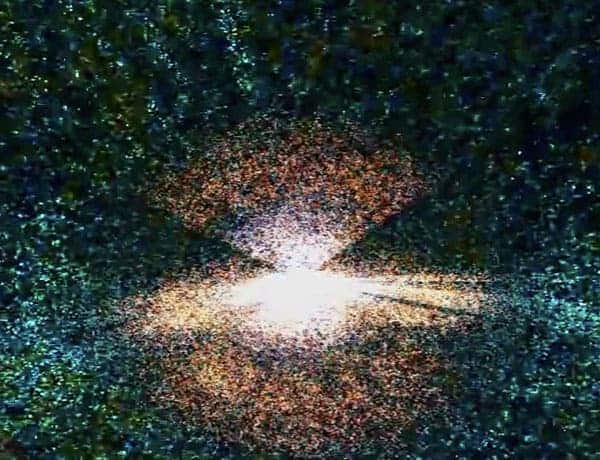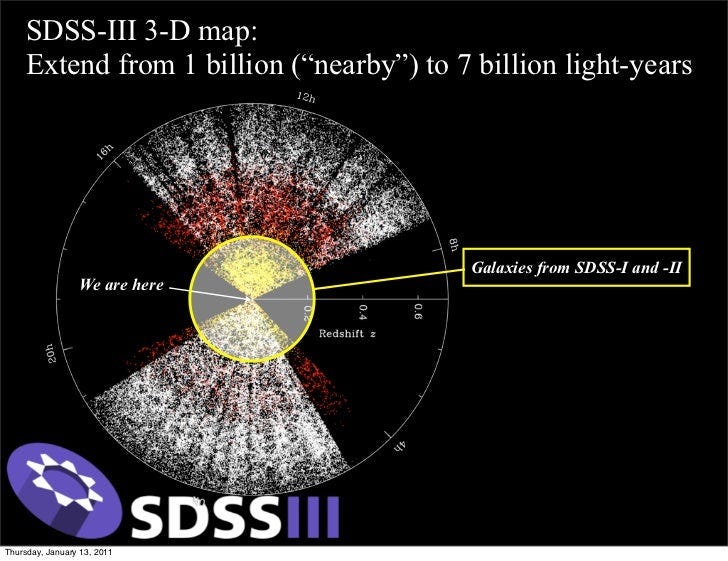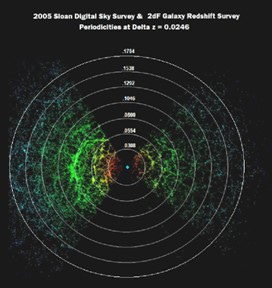Saturday, April 20, 2024
Scientism and the Sloan Digital Sky Survey results. Mainstream cosmology in crisis.
Yet more proof that the Copernican Principle, the Big Bang, and even heliocentricity have little merit and even less observable evidence to support them.
by StFerdIII
Prologue
The Sloan Digital Sky Survey or SDSS, now more than 25 years old, was financed and created to provide the most accurate mapping of the galaxies, quasars, and other objects in the universe to date. It is a long-running project currently in phase 5. Hundreds of astronomers, dozens of institutions and observatories from around the globe are involved mapping out hundreds of thousands of galaxies, quasars, objects and of course the ever-elusive ‘dark matter’, without which, the entirely of the Big Bang theology fails. In their own words, the Sloan Sky survey:
…will map in detail one-quarter of the entire sky, determining the positions and absolute brightnesses of more than 100 million celestial objects. It will also measure the distances to more than a million galaxies and quasars… The SDSS addresses fascinating, fundamental questions about the universe…will tell us which theories are right – or whether we have to come up with entirely new ideas.
The Sloan Digital Sky Survey (SDSS) is a joint project of The University of Chicago, Fermilab, the Institute for Advanced Study, the Japan Participation Group, The Johns Hopkins University, the Los Alamos National Laboratory, the Max-Planck- Institute for Astronomy (MPIA), the Max-Planck-Institute for Astrophysics (MPA), New Mexico State University, University of Pittsburgh, Princeton University, the United States Naval Observatory, and the University of Washington. Funding for the project has been provided by the Alfred P. Sloan Foundation, the participating institutions, the National Aeronautics and Space Administration, the National Science Foundation, the U.S. Department of Energy, the Japanese Monbukagakusho, and the Max Planck Society.
A long list of the great and good institutions. The ‘establishment’ of academic cosmology no less. Yet as they declare in their mission statement, creating and developing new ideas will need to be undertaken, along with the decommissioning of the Big Bang religion and much of Copernicanism. The SDSS simply does not support either. Not that anyone is told this.
In fact, ‘The Science’ as it always has done when faced with evidence which eviscerates its dogma, will simply declare that the observations in fact support and confirm their theology! Indeed, it is ‘exactly as they expected’. We have heard the same for 200 years from the drugs-pharmaceutical industry, not to mention the non-sciences of evolution, medicine, virology, space exploration, and climate theology. In every sphere and cult within ‘The Science’ the above declarations are the standard mantra. Just ignore the evidence, obfuscate, issue propaganda, delete evidence and declare in ever-so confident tones that ‘The Science’ has been vindicated. After this confident assertion, supported by tortured data sets, collect your money.
It can’t be in the center!
By 2003, the SDSS had already discovered that the Earth seemed to be in the center of the known universe. Since then, the data has simply accumulated in support of this observation. However, howls of outrage and name-calling are sure to follow if this idea is either distributed or worse believed. But there it is.
The SDSS confirms that the Earth in the center of two wedge-shaped galaxy segments near the ‘barycenter’ or center of universal mass. The SDSS also shows that galaxy density decreases as the distance from Earth increases, implying a concentric proportion leading to the Earth. This means that the Bangers cannot use the excuse that the view if from the observer, namely our Earth, and therefore ‘distorts’ the known universe’s map.
‘The Principle’ rubbished
If one were to perform a similar survey from another part of the universe, these concentric proportions would not appear. This means that the centrality of Earth provided by the Sloan Digital Survey is thus consistent with the quantization of redshift values that have been accumulated for five decades or more (Varshni, Alp). Once again, the ‘Copernican Principle’ is violated and no proof whatsoever can be offered in its defense. The ‘Copernican Principle’, is simply that the Earth is an unimportant little flattened spheroid at the centre of nothing and therefore by extension, humans are a blind chance artefact of no great import, probably evolved from panspermic space dust.
But the facts don’t support this misanthropy or its associated dogma. Concentricity and the heterogeneous distribution of galaxies are in defiance of mainstream cosmology’s claims and models including its vaunted ‘Copernican Principle’. The fact that the universe is not isotropic and does not show the same properties in every direction, as predicted by this ‘Principle’, means we have an anisotropic or heterogenous universe. Given these facts, if the observer view was to change from the Earth to somewhere else in the universe, we can see that the mathematical theorems underlying galaxy formation are wrong and this viewer would conclude that the Earth is at the center. Astronomer Harold Slusher wrote:
If the distribution of galaxies is homogeneous, then doubling the distance should increase the galaxy count eightfold; tripling it should produce a galaxy count 27 times as large. Actual counts of galaxies show a rate substantially less than this. If allowed to stand without correction, this feature of the galaxy counts implies a thinning out with distance in all directions, and that we are at the very center of the highest concentration of matter in the universe….This would argue that we are at the center of the universe.
When galaxy counts are adjusted for dimming effects, it appears that the number of galaxies per unit volume of space increases with distance. From this we still appear to be at the center of the universe, but now it coincides with the point of least concentration of matter (Slusher, pp. 12-13).
SDSS data, which again confirms anisotropy and heterogeneity, contradicts the Copernican Principle and what Bang theology predicts and demands. More here




